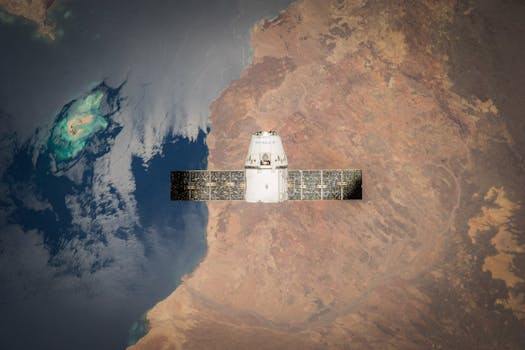From Ground to Sky: The Evolution of Satellite Telecommunications Technology

From Ground to Sky: The Evolution of Satellite Telecommunications Technology
From Ground to Sky: The Evolution of Satellite Telecommunications Technology has been a remarkable journey, marked by significant advancements and innovations that have transformed the way we communicate. The evolution of satellite telecommunications technology has been a gradual process, spanning several decades, and has involved the contributions of numerous individuals, organizations, and governments.
The early days of telecommunications were marked by the use of traditional ground-based systems, such as copper wires and fiber optic cables, which were limited in their ability to provide global connectivity. However, with the launch of the first artificial satellite, Sputnik, in 1957, the possibility of using satellites for telecommunications became a reality. The first commercial satellite, Intelsat 1, was launched in 1965, and it marked the beginning of a new era in telecommunications.
Early Developments in Satellite Telecommunications

The early developments in satellite telecommunications were focused on providing basic communication services, such as voice and data transmission. The first satellite communications systems were based on geostationary satellites, which were placed in orbit around the Earth at an altitude of approximately 36,000 kilometers. These satellites were used to provide transcontinental and transoceanic communications, and they played a critical role in the development of global telecommunications networks.
The 1970s and 1980s saw significant advancements in satellite telecommunications technology, with the introduction of new satellite systems and technologies. The launch of the Intelsat 4 satellite in 1971 marked the beginning of a new era in satellite communications, with the introduction of multiple spot beams and frequency reuse. The 1980s saw the introduction of digital satellite communications, which provided higher capacity and better quality services.
Modern Satellite Telecommunications Technology

Modern satellite telecommunications technology has evolved significantly since the early days of satellite communications. The introduction of new technologies, such as Ku-band and Ka-band satellites, has enabled the provision of higher capacity and higher speed services. The use of advanced modulation techniques, such as quadrature amplitude modulation (QAM), has also improved the efficiency of satellite communications systems.
The development of satellite constellations, such as the Iridium and Globalstar systems, has enabled the provision of global mobile satellite services. These systems provide voice and data services to mobile users, and they have been used in a variety of applications, including emergency response, maritime communications, and remote area communications.
Future Developments in Satellite Telecommunications

The future of satellite telecommunications is likely to be shaped by a number of factors, including technological advancements, market demand, and regulatory developments. The introduction of new technologies, such as 5G and quantum communications, is expected to have a significant impact on the satellite telecommunications industry. The growing demand for global connectivity and the increasing use of satellite communications in emerging markets are also expected to drive the growth of the industry.
The development of new satellite systems, such as the OneWeb and Amazon Kuiper Systems, is expected to provide higher capacity and higher speed services. The use of advanced technologies, such as artificial intelligence and machine learning, is also expected to improve the efficiency and effectiveness of satellite communications systems.
In conclusion, the evolution of satellite telecommunications technology has been a remarkable journey, marked by significant advancements and innovations. From the early days of traditional ground-based systems to the modern satellite-based systems, the industry has come a long way. As we look to the future, it is clear that satellite telecommunications technology will continue to play a critical role in providing global connectivity and enabling future innovations.
See more:






